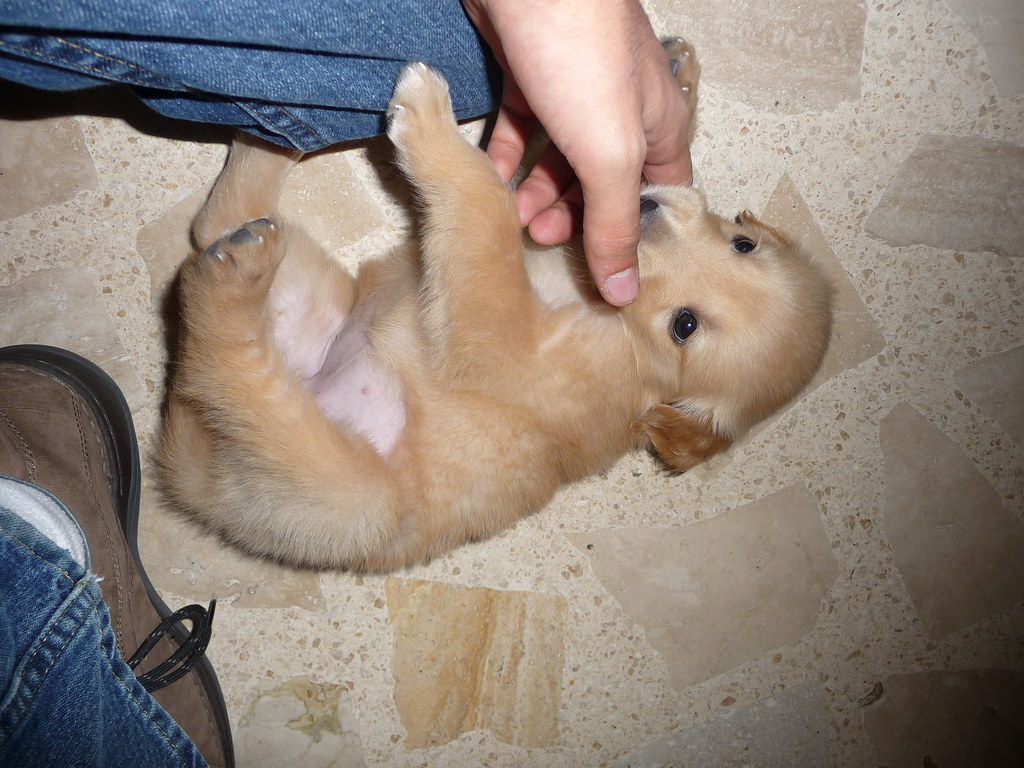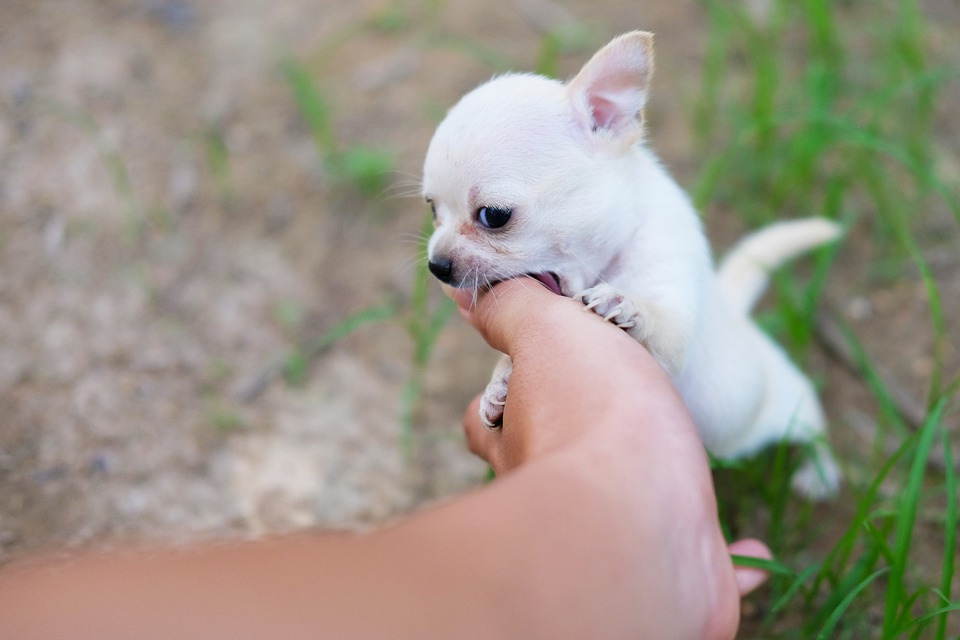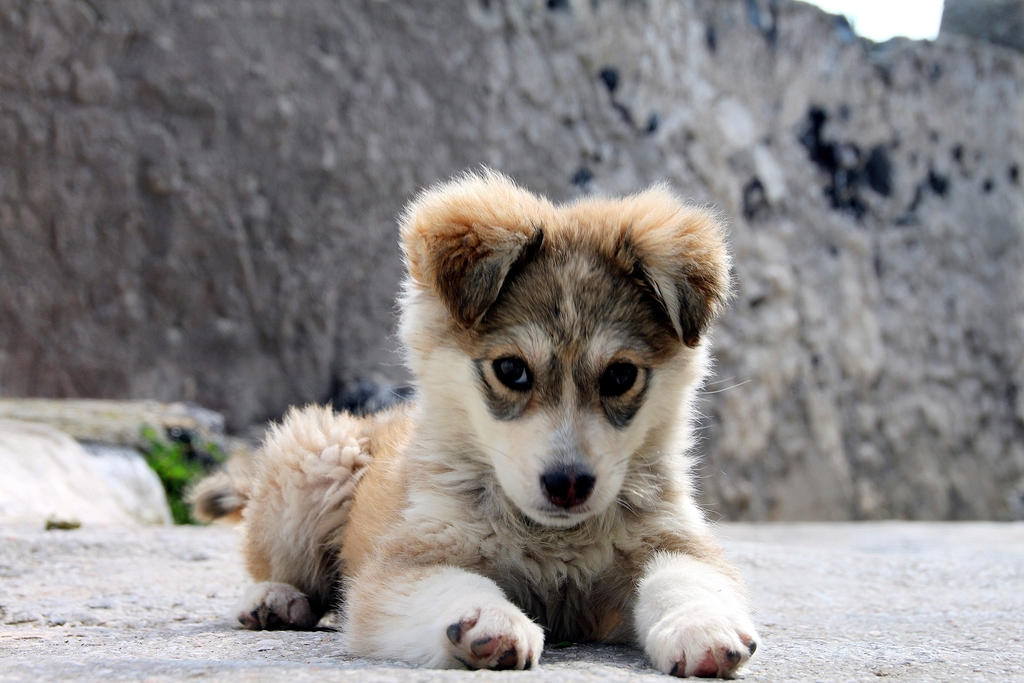Puppies are adorable creatures and we all like to play and cuddle with them as much as we can. But, do you know that too much play is not safe for your puppy? It has effects on his general health in the future, the same case as not playing with your puppy at all. So, how much playtime does a puppy need?
The best formula to determine how much playtime a puppy needs is the famous five-minute rule. It states that a puppy should play for five minutes per every one month of its age, meaning a 2-month-old puppy should play for 10 minutes a day. This time increases as the age increases.
Read on to understand better the time needed for a puppy to play and the best playing games for you and your pup.
How Much Playtime Does A Puppy Need?

The amount of time a puppy needs is determined by more than the famous five-minute rule. You should also consider the breed, size, and health.
Breed
some breeds are more active than others and thus have a greater potential for exercise. This is usually linked with higher heat tolerance, allowing them to play outside for longer periods.
Size
Over-exercising can lead to joint problems in larger breeds. It’s not a smart idea to put your giant dog on a long hike even if he can keep up with you. It is a frequent misperception that size equates to energy levels.
Health
The health of your puppy will greatly affect the time which he will play. Depending on his health conditions, he might not be permitted to play at all.
Which Games Should I Play With My Puppy?
Fetch And Seek
Both of these games are amusing and interesting to play with your dog, they also help you to bond with your puppy. Select objects your pup can take up with his mouth for Fetch, such as a ball or chew toy, and don’t throw it too far at first. Seek is a basic hide-and-seek game; is it behind your back? Is it just around the corner? You may begin by playing this game with treats that have a strong odor.
Balls
Puppies may prefer a rolling ball at first, but as time goes on, they may prefer a bouncing ball. Choose one that is soft enough to bite but not so little that it will fit totally in your puppy’s mouth.
Chew Toys
Allow your dog to choose from a range of chew toys. Instead of chewing on unsafe objects (like socks and shoes), encourage your pup to chew on his toys Clap your hands, say “No!” loudly, and replace the item with a toy anytime he eats something he shouldn’t. Squeaky toys are extremely tempting to puppies, but you must ensure that your dog never detaches the squeaker and ingest or choke on it.
Stuffed Toys
Stuffed toys these toys are given to pups to play with and chew. Because the eyes and noses of stuffed toys are the first things puppies try to gnaw off, you may want to remove them or search for ones without them.
Games You Shouldn’t Play With Your Puppy
Tug-of-war
Tug-of-war is a game that can cause your puppy to become confused. If you win, you will be dominant, while your puppy will be fearful and docile. Also, allowing your dog to win will give him the impression that he is in command. Another consequence of tug-of-war is that it teaches the puppy that tearing is okay when playing with your clothing or home things.
Chase
Children quickly learn that if they run around, the puppy will chase after them. The disadvantage of Chase is that it interferes with learning the basic command of “come.” Chasing a puppy sends the message, “If you come to me, I’ll run away,” which is not what you want to send.
Biting

At no time should you allow your dog to bite any part of your body. Allowing “attack” games or “teasing” your dog with your fingers, hands, toes, or feet is not permitted. If your puppy bites you, grab her collar and say, “No!” loudly. If your puppy continues to bite, confine her to her in a crateuntil she calms down. When you continue to play with your puppy while she is biting, she will learn that biting is part of the game. Biting can have tragic implications, not only for the person who has been bitten but also for the dog who has been bitten.
Jumping
Avoid allowing your dog to jump or climb on humans. People often mistake this behavior in a dog for cuteness and friendliness. Jumping by a fully grown dog can result in human injury and garment damage. When visitors (including you) come into your home, teach your dog to sit. A puppy that sits on demand should be praised profusely.
Wrestling
No matter how big or muscular your dog is, you should never wrestle with her. Wrestling, like tug-of-war, conveys contradictory messages about who is the dominant party: you or your dog. Furthermore, because a dog’s limbs are not designed to tolerate the force of wrestling, you risk injuring your pet.
Is It Okay to Play with Other Dogs?

As long as the puppies are up to date on their immunizations, playing with other dogs is a great idea. From a young age, your puppy will start to socialize with other dogs, perceiving them as companions rather than possible territorial threats.
It will also teach him to be less aggressive. Dogs who do not receive enough socialization with other dogs during their early years may be well-behaved towards their owners but misbehave around other dogs.
Wrap Up
How much playtime a puppy needs will depend on the individual puppy plus other factors like health, age, and breed. Nevertheless, the famous five-minute rule is applicable if you are not neglecting your puppy.


7 thoughts on “ How Much Playtime Does A Puppy Need?”